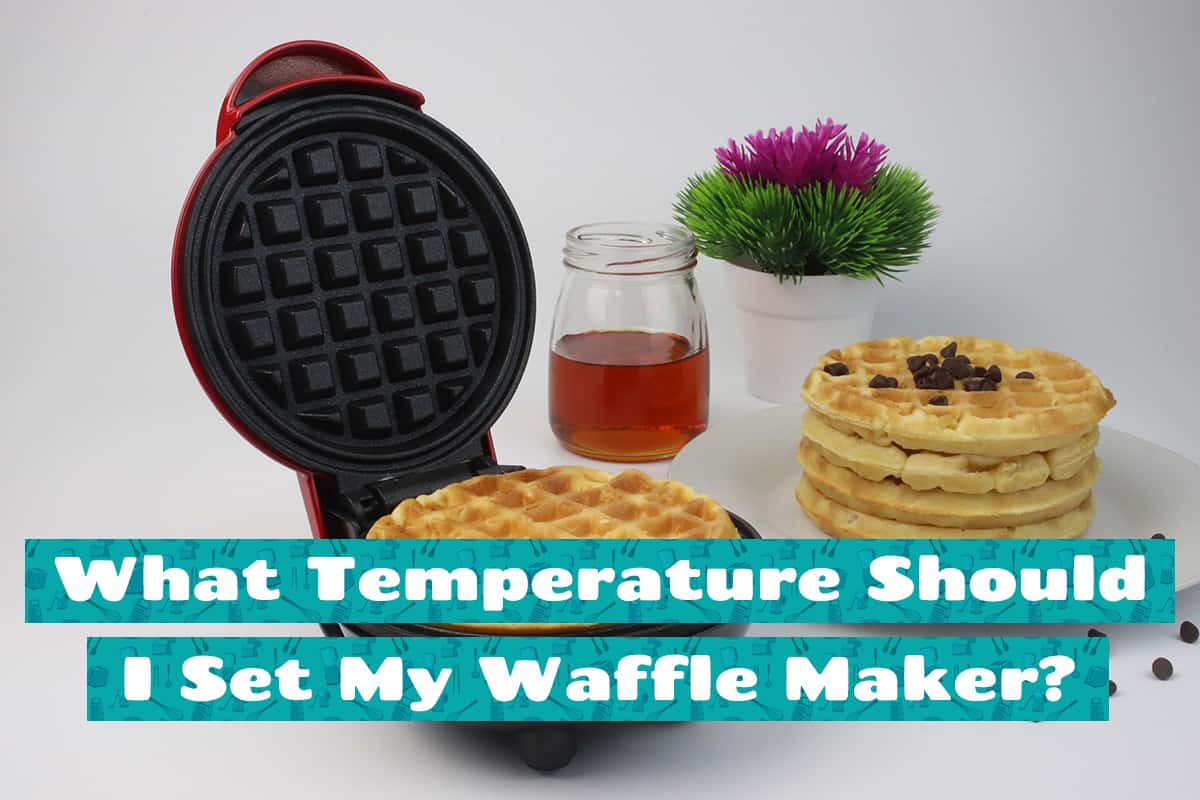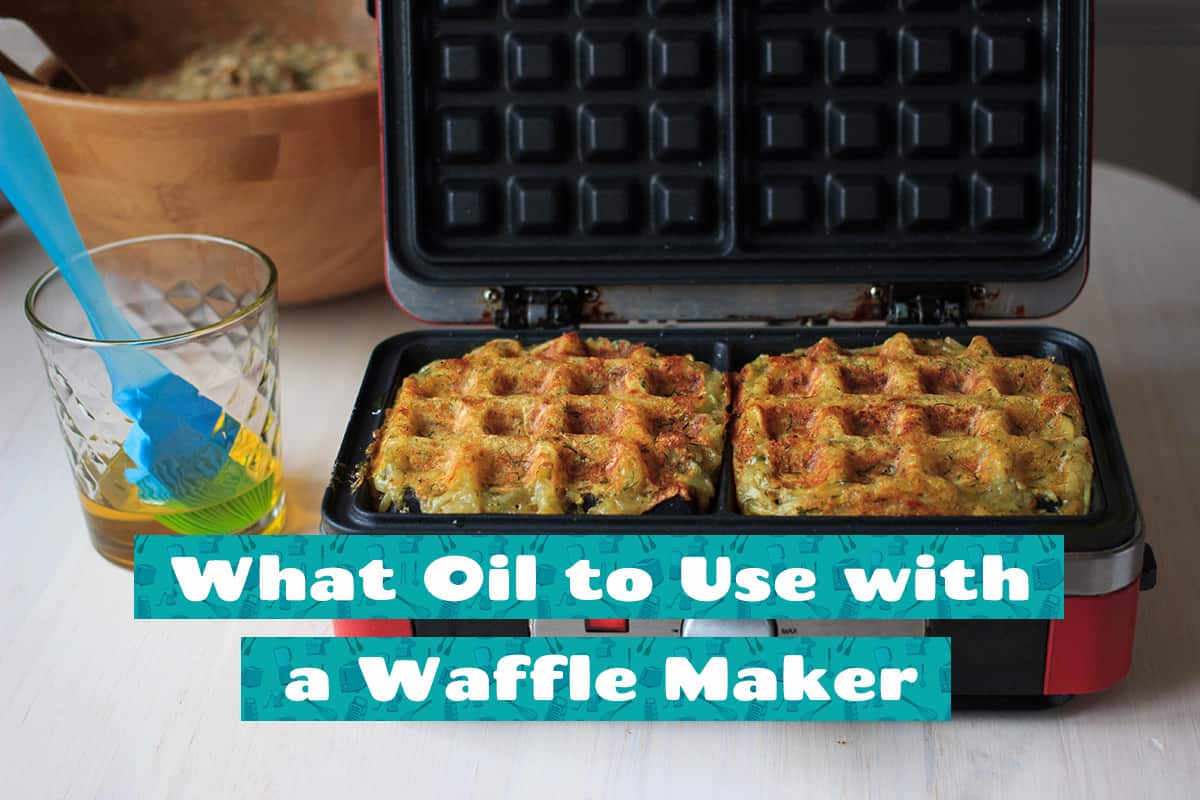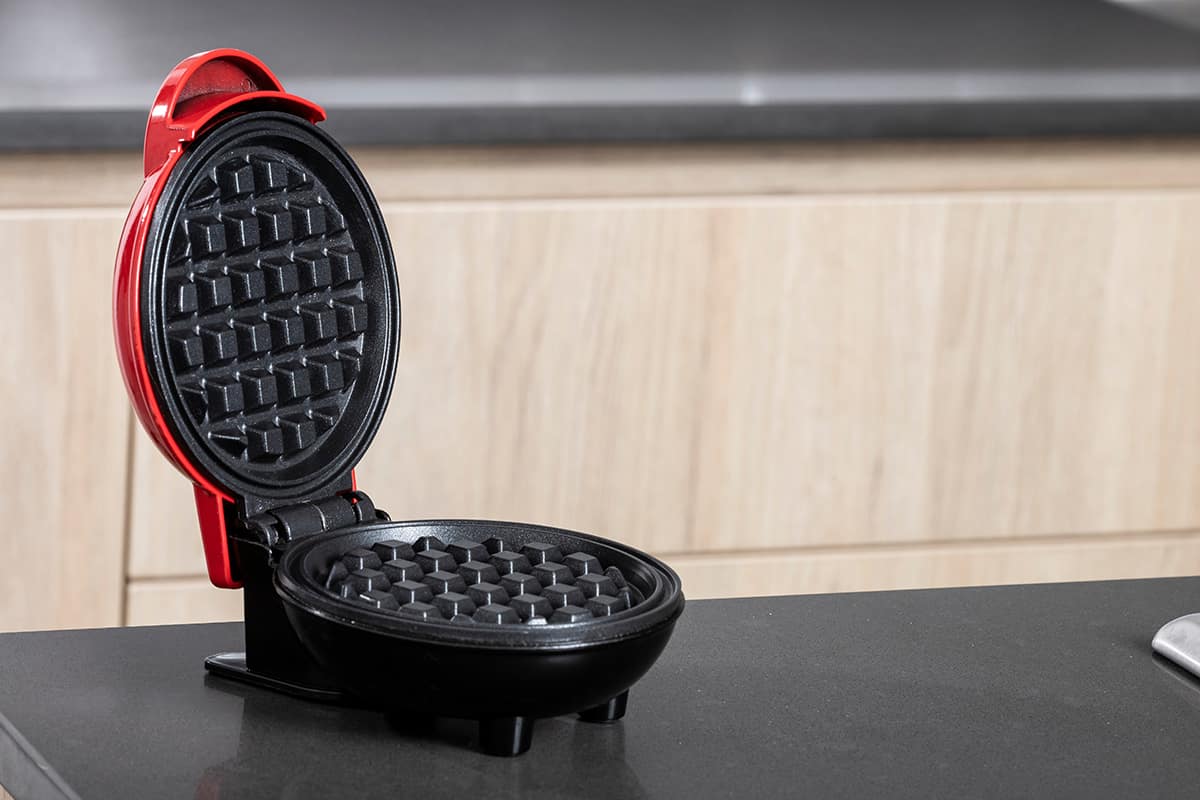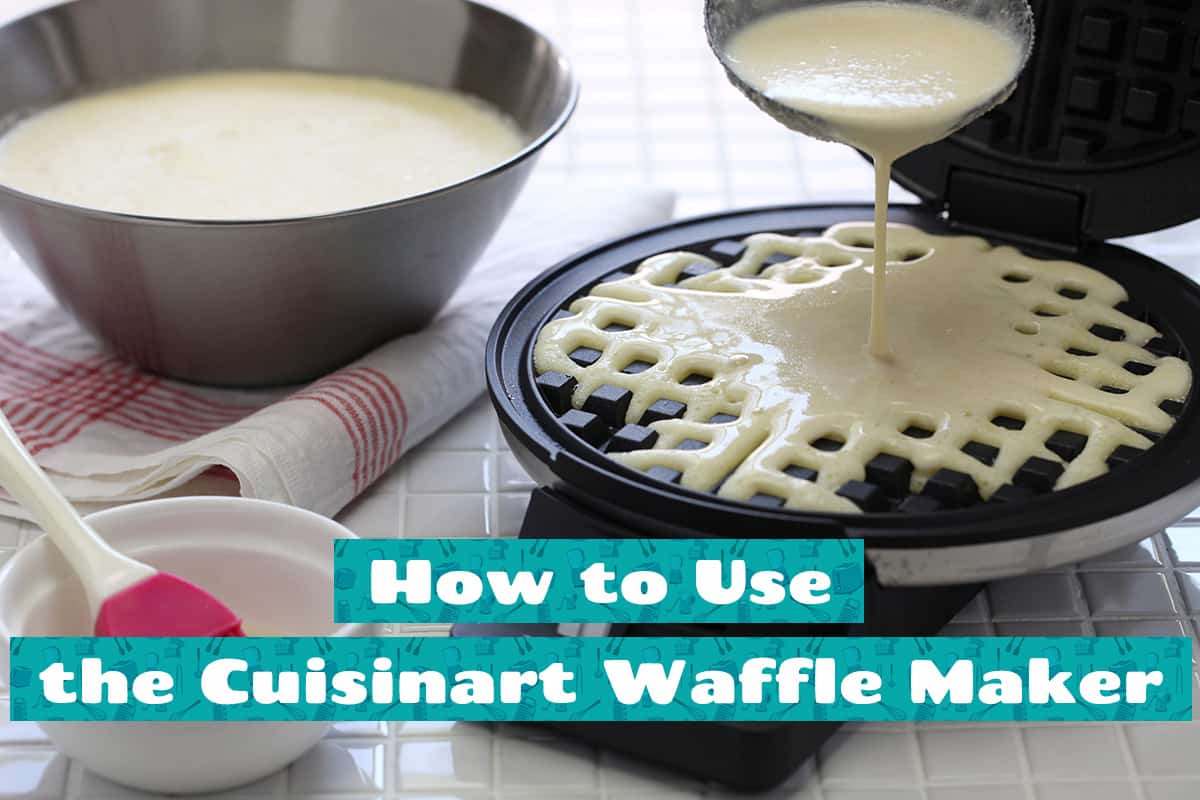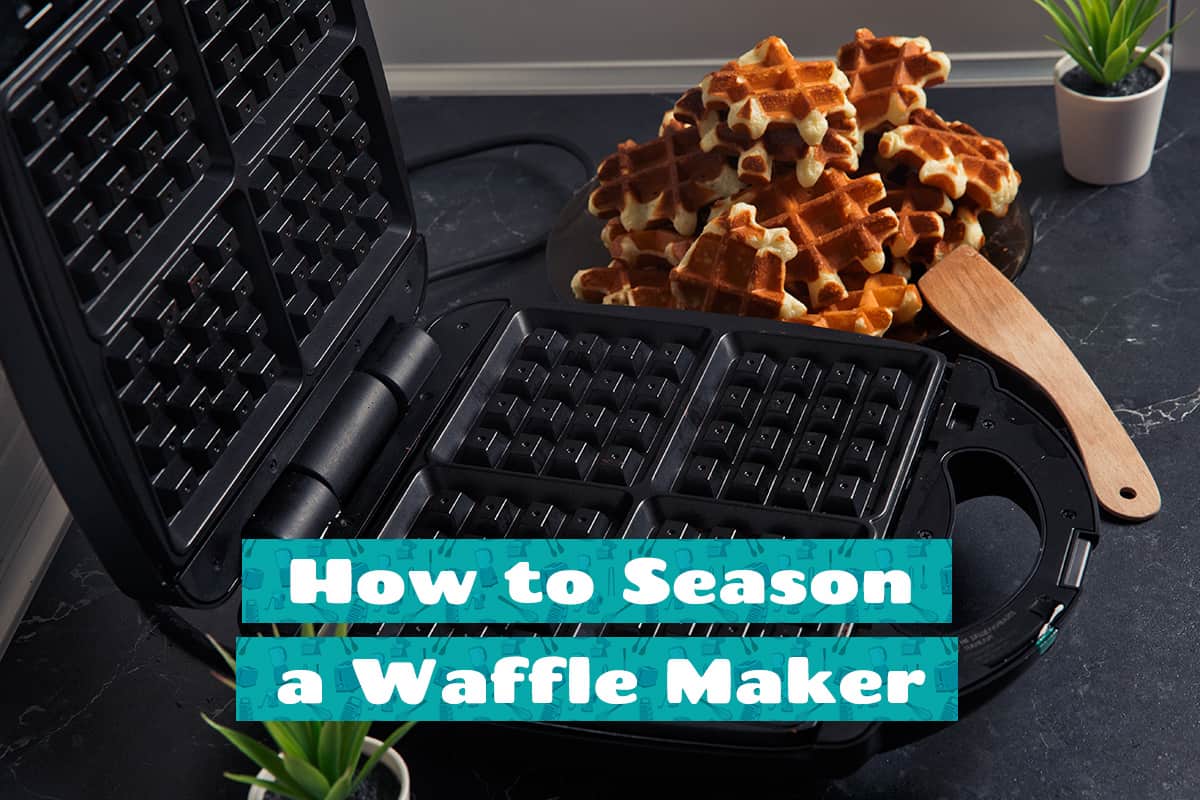Waffles, those delightful breakfast treats with a crispy exterior and a fluffy inside, can be the highlight of your morning. But have you ever wondered why sometimes they turn out soggy or burnt? The secret often lies in the temperature of your waffle maker. Just like you wouldn’t bake a cake at any random oven setting, your waffle maker needs the right temperature to produce that perfect waffle.
In this article, we’re diving deep into the world of waffle-making temperatures. We’ll cover the mechanics of different types of waffle makers and what waffle-related mistakes you need to avoid.
What Role Does Temperature Play In a Waffle Maker?
Temperature is your secret weapon in waffle making. Too low, and your waffles will come out limp and unappetizing. Too high, and you might end up with a burnt mess. When the waffle maker reaches the ideal temperature, it cooks the batter in a way that allows the moisture to escape, giving you that crisp exterior and fluffy interior we all love.
Different Types of Waffle Makers
There are two main types of waffle makers: stovetop and electric. Stovetop waffle makers are old-school; you put them on your stove and control the temperature by adjusting the heat. Electric waffle makers are more modern and usually come with pre-set temperature options, sometimes even a timer.
- Stovetop Waffle Makers: These are usually made of cast iron and require you to manually control the heat by adjusting your stove’s settings. The temperature can vary, so it’s a bit of a trial-and-error process to find the perfect setting.
- Electric Waffle Makers: These appliances come with a built-in heating element and temperature controls. Most models have light indicators to tell you when the device is hot enough for your batter. Some advanced models even have multiple settings for different types of waffles. For the rest of this guide, we will focus specifically on electric waffle makers.
The Perfect Temperature For a Waffle Maker
You’ve got your waffle maker, and you’re eager to churn out some mouth-watering waffles. But before you pour in that batter, let’s talk about nailing the perfect cooking temperature.
Temperature Ranges for Various Waffle Types
Believe it or not, not all waffles are made equal, and different waffle styles require specific temperature settings. Here’s a comprehensive chart to guide you:
| Waffle Type | Temperature Range (Fahrenheit) | Notes |
| Classic American | 375-390 | Golden and fluffy |
| Belgian | 350-365 | Crispy on the outside, soft inside |
| Liege | 365-380 | Caramelized exterior |
| Stroopwafels | 330-340 | Cook until golden, not crispy |
Adjustments for Altitude and Humidity
Elevation and moisture in the air can play tricks on your waffle game.
- High Altitude: If you’re cooking in a mountain cabin, lower the temperature by about 10 degrees to prevent the batter from drying out too quickly.
- Humid Climate: In muggy settings, you might want to bump the temperature up by 5-10 degrees to ensure the waffles crisp up nicely.
How Long Should You Cook Your Waffle?
Your cooking time will vary depending on the waffle type and batter consistency. For most waffle types, a cooking time of 5 to 6 minutes is a good starting point. But always trust the look and feel—golden brown and slightly crisp edges are what you’re after.
How Temperature and Time Interact
Cooking time is in a dance with temperature: lower temps might require longer cooking times, while higher temps can speed things up. If you’re after a super-crispy waffle, consider raising the temperature and reducing the cooking time slightly.
Temperature Tweaking for Crispness
Everyone has their idea of waffle perfection. Some like ‘em crispy; others prefer a softer bite. If you’re in the crispy camp, aim for the higher end of the temperature range for your chosen waffle type. If you like your waffles a bit more tender, stick to the lower end.
Using Temperature for Flavor Development
Higher temperatures can give you that brown, crispy crust due to something called the Maillard reaction. It’s what happens when the proteins and sugars in the batter get to know each other at high heat. But be careful: too hot, and you’re in burnt territory.
Why Consistent Temperature Matters
A stable temperature is your best friend in waffle making. Fluctuating temps can result in uneven cooking, giving you a waffle that’s burnt in some spots and doughy in others. Most electric waffle makers do a good job of maintaining a consistent temperature, but it’s always good to keep an eye out.
Tips for Maintaining Temperature
- Don’t Peek Too Often: Each time you lift the lid, heat escapes. Be patient; good waffles come to those who wait.
- Batch Cooking: If you’re making several waffles, note that the device might heat up more over time. You may need to adjust the temperature down a notch for later batches.
Common Mistakes to Avoid

So, you’re fired up to make some top-tier waffles, but let’s pump the brakes for a second. Even the best of us can stumble in our waffle journey.
1. Ignoring the Preheat Signal
Many electric waffle makers come with a handy light or beep that tells you when it’s preheated and ready for batter. Don’t get impatient and pour your batter in too soon. Doing so can result in uneven cooking and a disappointing breakfast experience.
2. Overfilling the Waffle Maker
Too much of a good thing isn’t always great—especially when it comes to waffle batter. Overfilling can lead to a mess, with batter oozing out of the sides, and unevenly cooked waffles. Most waffle makers have a fill line or come with a scoop—use it!
3. Not Using Cooking Spray
Nobody likes a waffle that’s glued to the maker. Always use a non-stick spray or a small brush to apply oil to the plates before adding batter. Even if your waffle maker is ‘non-stick,’ a little extra insurance never hurts.
4. Using the Wrong Batter Consistency
Waffle batter shouldn’t be too thick or too runny. If it’s too thick, it won’t spread out evenly, leaving you with waffles that are doughy in the middle and crispy on the edges. Too runny, and you’re looking at flat, uninspiring waffles.
5. Fiddling with the Temperature Too Much
It’s tempting to keep fiddling with the temperature knob or digital settings, especially if you’re new to waffle-making. But each time you adjust, you risk making it difficult for your waffle maker to maintain a stable cooking temperature. Pick a setting and stick with it, at least for one batch.
6. Skipping the Test Waffle
Think of the first waffle as a test run—a chance to fine-tune your batter and temperature settings. If it’s not up to snuff, adjust and move on. Your taste buds will thank you.
FAQs
1. What is the ideal temperature for a waffle maker?
The ideal temperature for a waffle maker varies depending on what type of waffle you’re making. For a classic American waffle, you’ll want to set the dial between 375 and 390°F. If you’re a Belgian waffle enthusiast, 350 to 365°F is your sweet spot. Liege waffles, those caramelized beauties, do well at 365 to 380°F. And for the thin, syrup-filled stroopwafels, aim for 330 to 340°F.
These ranges can help you lock in that perfect combo of crispy and fluffy or gooey and caramelized—whatever your waffle-loving heart desires!
2. Can I use an oven thermometer to check my waffle maker’s temperature?
An oven thermometer might not be the most accurate or convenient tool for checking your waffle maker’s temperature, though. These thermometers are generally designed for the slower, more steady heat of an oven, not the quick and high heat of a waffle iron.
Instead, consider using an infrared thermometer for a more accurate reading. These nifty gadgets can quickly measure surface temperatures without touching the actual surface, making them perfect for a sizzling waffle maker. Just aim, click, and you’ll know if you’re in the right heat zone.
3. How do I know when my waffle maker needs calibration?
Calibration involves resetting the appliance so the temperature control aligns correctly with the actual heat levels.
If your waffles are consistently coming out undercooked or overcooked even when you follow the recommended temperature settings, your waffle maker might be crying out for calibration. Other signs include uneven browning or if the cooking time is way off from what the recipe or appliance manual suggests.
Some waffle makers come with a built-in calibration feature in their settings menu. For others, it might require a screw adjustment on the thermostat or even professional servicing.
